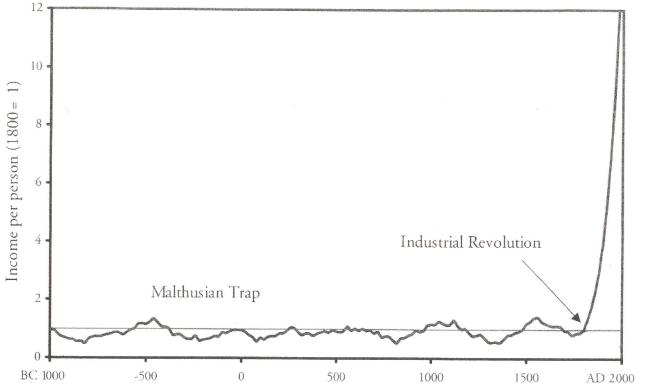I’m currently doing some work on The Industrial Revolution. It should be noted that all the following analysis is strictly in a European context (with a particular focus on Britain).
It is widely regarded that economic growth prior to 1760 was extremely low. Even after the start of The Industrial Revolution growth was modest (the precise figures depend on how pessimistic your outlook is, but it is usually estimated in the region of 0.5%-2.5% GDP growth per year). The general trend is shown on the graph below.
Yet, all the growth figures we have prior to the 20th century are best guesses. The samples used to predict GDP growth are either very small, very niche, or a combination of both.
The first reliable (and I use that word generously) nationwide data collection was carried out in the 1800 English census. This got me thinking. Is it a coincidence that our growth figures predict that growth took off around 1800, the exact same time the quality of the sample populations available improved so drastically? I am not of the opinion that if better economic data was available for the past 1000 years our outlook on growth would be that different. I am just contemplating the idea that there maybe be a correlation between growth estimates increasing so markedly in 1800 and the quality of the data used to estimate it increasing so substantially. If better data had been available prior to 1800 would we have seen a more gradual growth path?
But of course, this is ultimately an issue for Econometricians and Economic Historians (people who are much more qualified than me!).

